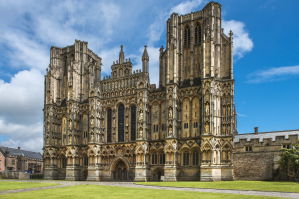
Cathedrals have raised concerns about the introduction of a new cap on the amount of VAT that they and other listed places of worship can claim.
Under the revised scheme, listed places of worship will now be limited to claiming up to £25,000 in VAT per year on repairs, effective until the end of March 2026.
While government data suggests that 94% of claims will remain unaffected by the change, cathedral leaders argue that the cap will have significant financial repercussions for major restoration projects.
The move has been described as transforming an "incredibly challenging" situation into an "almost unachievable" one, according to a cathedral official.
Nerys Watts, chief operating officer of Wells Cathedral, warned that the restriction would have a "really big difference," adding an estimated £8 million to planned repair costs over the next decade.
The VAT cap comes as the cathedral is preparing for a costly full-scale restoration of its centuries-old lead roofs.
Tessa Munt, MP for Wells and Mendip Hills, voiced her support for extending the scheme until March 2026 but expressed concern over the financial strain the VAT cap could impose on religious institutions.
She said that while cathedrals are "very beautiful places", they require substantial funding to maintain.
"Taking the VAT out of the bill by allowing people to claim it back would be very significant," Munt said.
"It’s going to mean a lot for some of our cathedrals across the country."
She has urged the government to show "leniency" at the end of March 2026 so that VAT can be claimed beyond that date on any completed works.
A representative from the Department for Culture, Media, and Sport acknowledged the role of listed places of worship in providing a range of public services and welcoming people of all faiths and backgrounds.
"Many of them are architecturally and historically significant," the representative stated.
Ms Watts echoed this sentiment, emphasising the importance of preserving historic buildings.
"Historic buildings like these and historic churches are very expensive to maintain and look after,” she said.
“We don’t want to lose them. So not having to pay VAT and saving that 20% has been significant."
She added, "They [the buildings] have extensive repair needs, and they’re a key part of our nation’s heritage that we want to pass on to future generations."
In recognition of the cultural and historical value of these sites, the government has extended the Listed Places of Worship Grant Scheme until March 31, 2026, allowing religious organisations to continue applying for grants covering eligible VAT expenses related to repairs and renovations.
However, the future of the scheme beyond March 2026 remains uncertain, leaving many concerned about the financial feasibility of preserving these historic places of worship.









